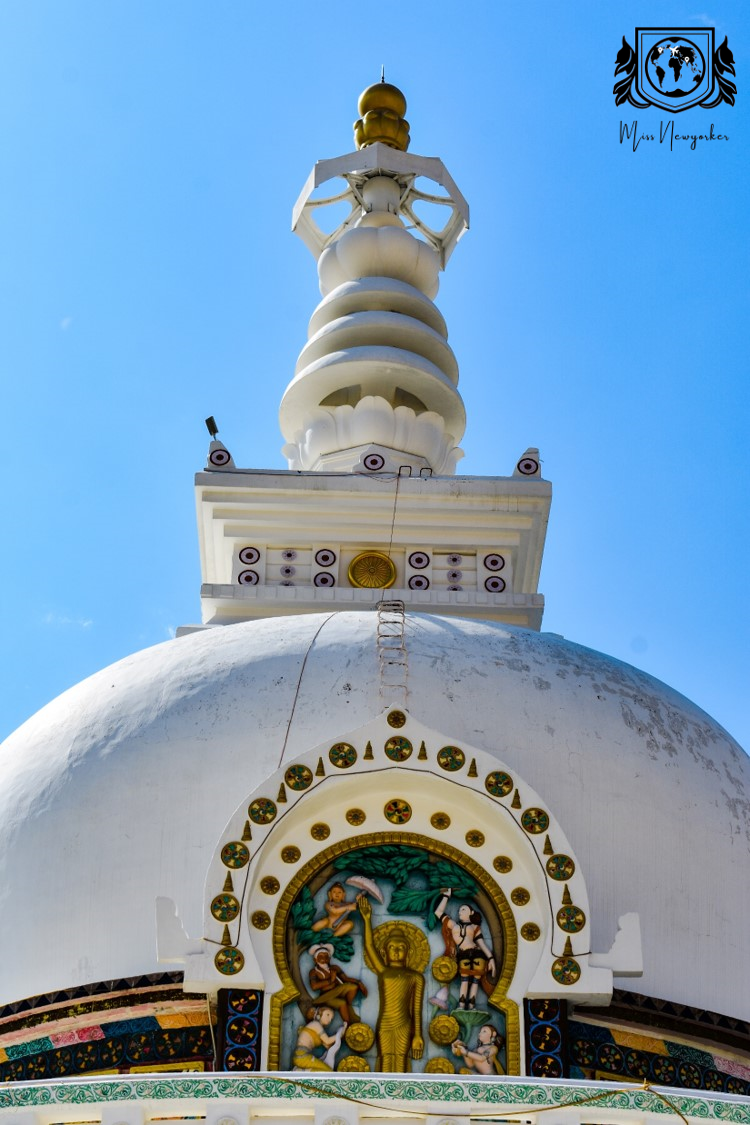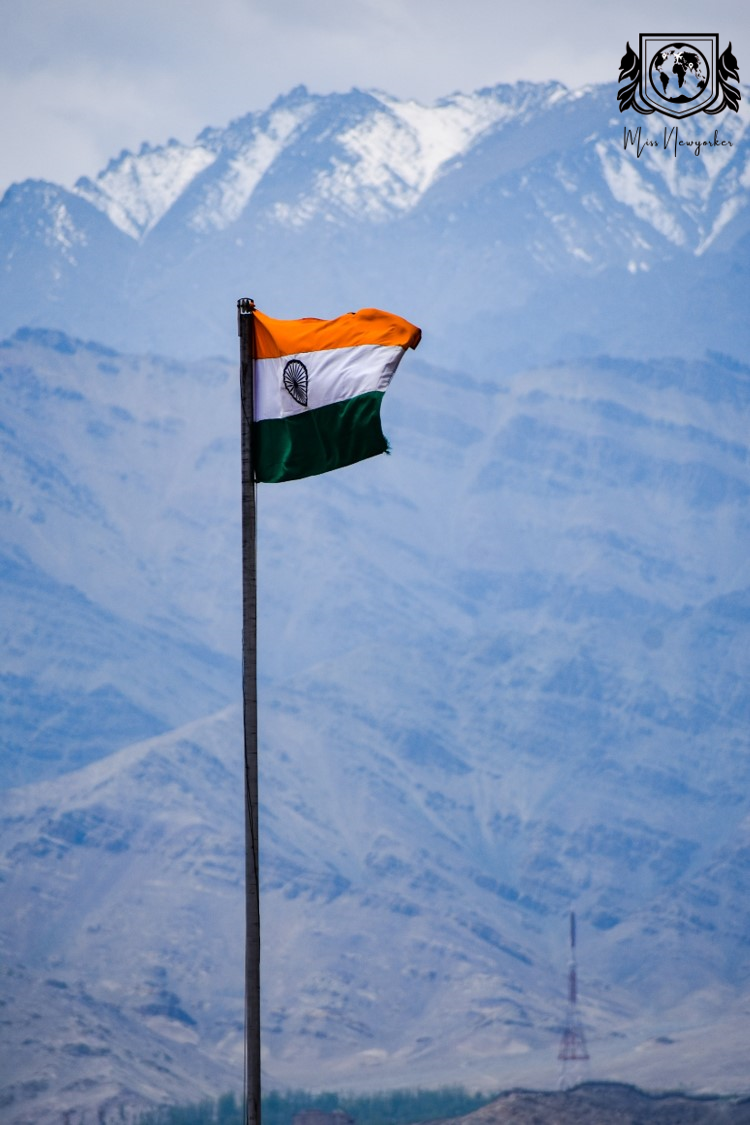Ladakh
- Aditi Lad

- Jul 4, 2022
- 4 min read
Hello everyone! Hope you've enjoyed the first part of the blog. Let's explore a few more amazing places in this blog.
Our day 2 was planned around visiting the key tourist attractions over the Leh-Kargill highway. We started our tour by visiting one of the most famous monuments in Leh - Shanti Stupa.



Shanti Stupa and was established by the Buddhist Order of Japan - Nipponzan Myohoji and was founded by Fujii Guruji, a close associate of Mahatma Gandhi, It has roots aging back to 700 years and is said that a 13th century monk Maha Bodhisattva Nichiren had prophesized that salvation for humans would lie in India where Buddhism is said to have originated.
Ladakh is famous for peace, harmony, environment and tolerance. But being a sensitive border area, 19th Kushok Bakula Rinpoche approached Guruji and sought the establishment in Ladakh. The construction was completed with the help of school children and government employees.
Did you know? There are over 80 Shanti Stupas located across Europe, Asia, and US and it was the current Dalai Lama (14th Dalai Lama Tenzin Gyatso) laid the foundation stone of this Stupa on 25th August 1985



The Stupa is built as a two level structure. The bottom level highlights the Dharmachakra - turning wheel of Dhamma in the center with deer on each side. Over the top sits a golden statue of Buddha on a platform that represent the wheel while the second level depicts the relics of Buddha depicting his birth, mahanirvana or death and him fighting the devils while meditating.



Did you know? Ladakh Shanti Stupa is the world's highest Shanti Stupa at an altitude of over 11,000 ft. is known to symbolize World Peace and also signifies ties between Ladakh and Japan.
The Shanti Stupa is surrounded by snow capped mountains and far along is seen the Khardung-La top. At the bottom lies the town Chandspa with military base which makes it easier to spot a military aircraft.
Next stop - Hall of Fame. It honors the brave soldiers of our country who lost their lives fighting and protecting the nation. The hall also offers a live session that brings to light every detail about the Kargil War.












A couple of pictures of a local monastery I spotted.


Next up was the drive to Magnetic Hill.



This is one of the most visited tourist attraction due to mysteries associated with the place about gravity defiance. A car, parked or running on neutral on this road, ends up running at a speed of ~10kmph up the hill. This phenomenon has baffled a lot of scientists and has also resulted in lot of theories and myths.
A myth that locals believe is that the reason why things move uphill here because its a roadway to heaven
The magnetic theory says that there's magnetic force in the surrounding mountains which is why airplanes avoid flying over this area.
Another theory called the 'Theory of Illusions' states that the magnetic hill is a downward slope
Did you know? Ladakh terrain is a rich source of minerals such as graphite, uranium, sulphur, limestone etc. and any form of mining activities are forbidden under their Environment Act that promotes a sustainable environment.
Driving past the magnetic hill, we paid a visit to one of the most famous gurudwara in Ladakh - Pathar Sahib Gurudwara located around 25kms away from Leh city.
The establishment of the Pathar Sahib Gurudwara has a story associated with it, It is said that while Guru Nanak (the founder of Sikh religion) was on his journey coming to India during his fourth spiritual discourse, was met with a few locals. The locals complained of troubles by a demon living over the mountain and requested Guru Nanak to help them get rid of the demon and that he was their last hope. Guru Nanak decided to help the locals and started meditating near the river bank. Seeing this, the demon got angry and upset and one day while Guruji was meditating, he rolled down a massive boulder towards Guruji to kill him. The boulder miraculously turned into soft wax upon touching Guruji. His rear body sank into the boulder and continued praying. The demon thought Guruji was dead and came down to the site and was annoyed to see Guruji alive and perfectly alright. He tried to kick Guruji with his right foot, but his foot sank in the boulder. Upon seeing this, the demon immediately regretted his actions and understood that Guruji was a holy disciple of god, fell on his feet and pleaded mercy. Guruji advised him to devote his life in the service of people.

Did you know? Shri Guru Nanak Dev Ji travelled on a spiritual discourse called - Udasis covering all of todays India, Sri Lanka, Tibet, Nepal, Pakistan, Afghanistan, Iran, Yemen, Iraq, Israel, UAE, Saudi Arabia, Oman, Qatar and Syria 4 times between 1500-1521 AD. Each Udasi started and concluded in India but covered different regions.
And the last stop of the day was the magnificent - Zanskar Confluence



This is one of the most famous tourist attractions in Leh - the Indus - Zanskar Confluence also known as the Sangam Valley. Indus aka Sindhu river is one of the longest river in Asia and also one of the primary rivers in North India. The Zanskar river which originates in Zanskar valley meets with Indus at this Sangam Valley.
Did you know? Zanskar river is a tributary of the Indus river and originates when Doda river and Lugna river meet at the Zanskar valley
The Indus river originates in Tibet and travels all the way through North India and is a reason why the water appears clear while Zanskar originates from the valley nearby and so appears grayish. The two rivers meet at the confluence and later ends up flowing as Indus all the way to Pakistan.
That was the end of the second day of our tour. We had quite some time in our hands so we decided to explore the Leh Market during evening.


That was all about the second day of our tour. The third and the last part of the blog is dedicated to the heart of Ladakh tourism - Pangong Tso and Nubra Valley.
Looking forward to hearing your feedback for this one while I promise to bring the next blog at the earliest. Enjoy reading :)



Comments